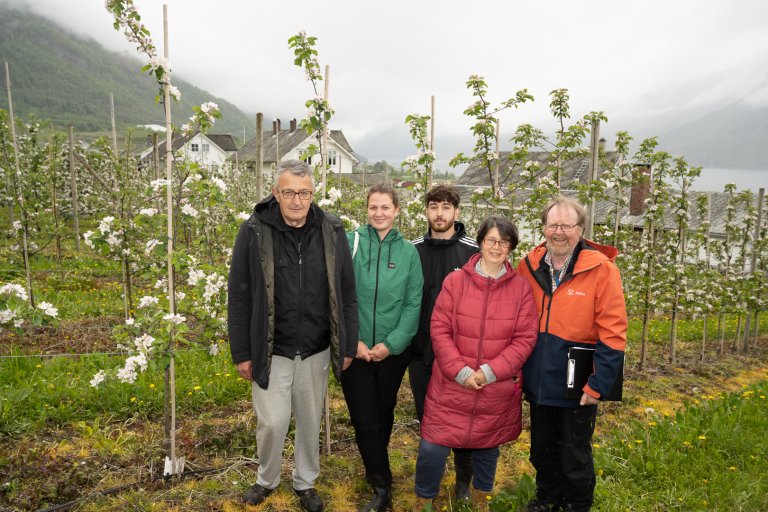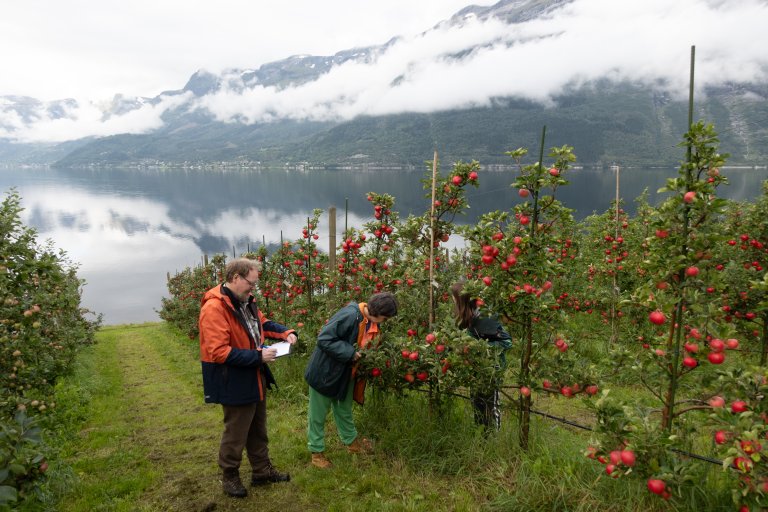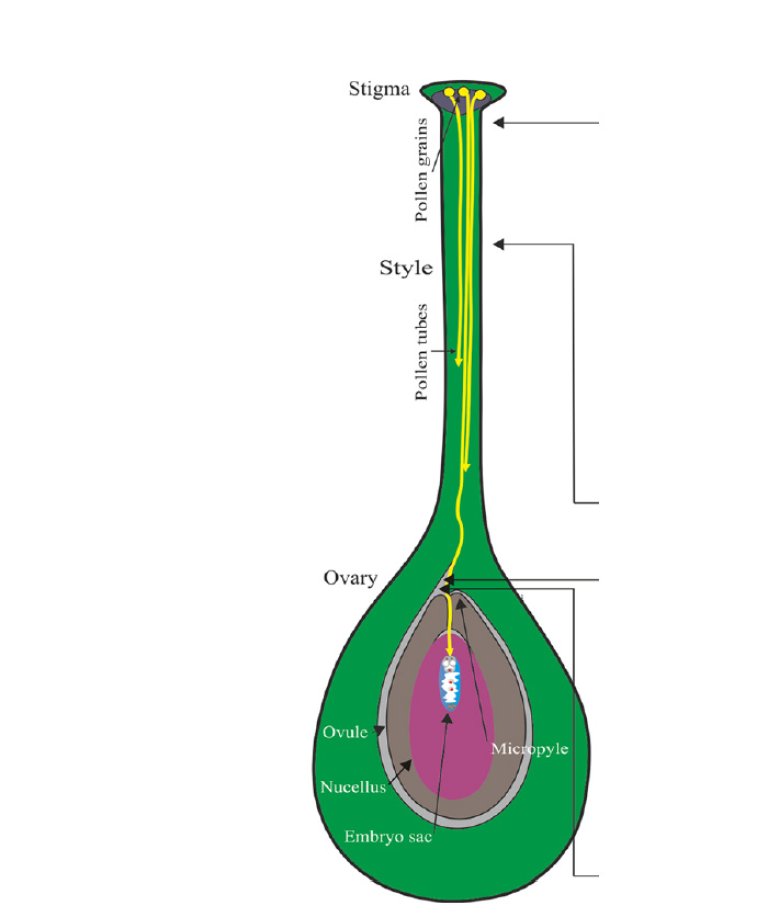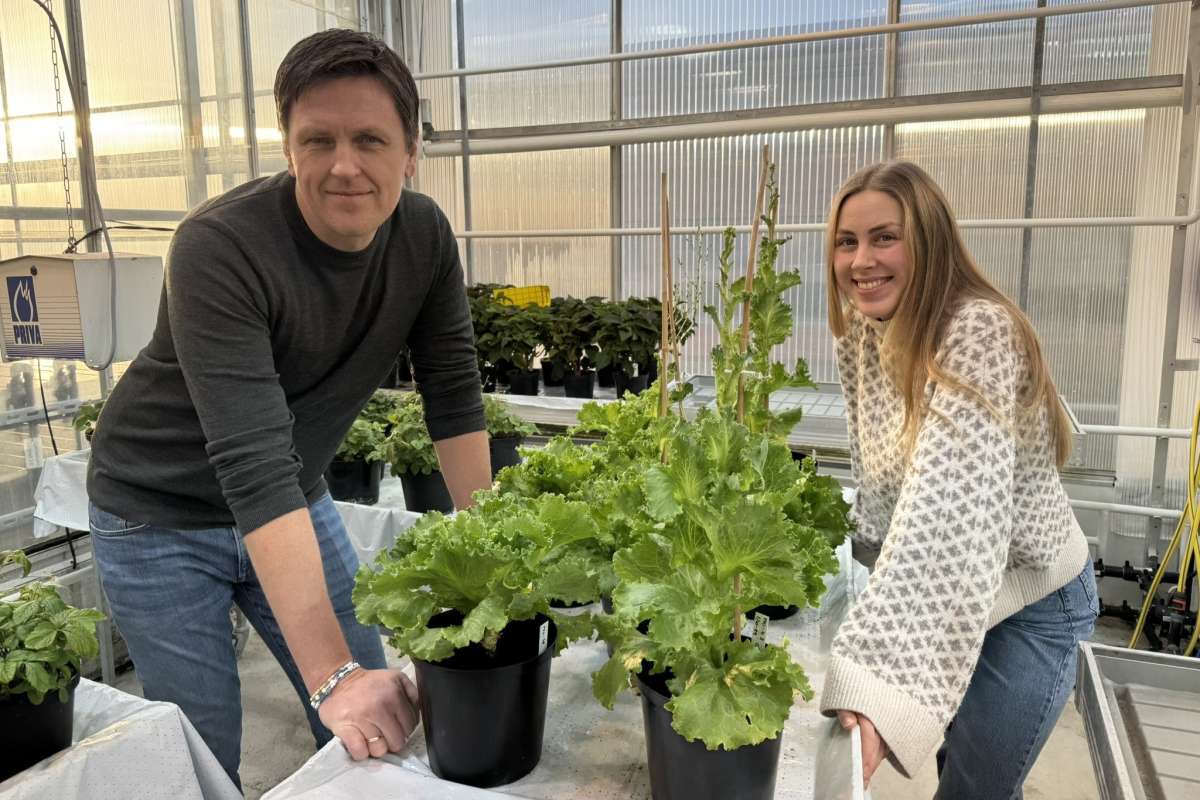The journey of the Norwegian Christmas apple

It’s red, sweet, and delightfully crunchy - the Norwegian Christmas apple. Photo: Hege Ulfeng
It’s red, sweet, and delightfully crunchy. After spending more than two months in cool storage in a fruit warehouse, it’s finally ready to make its way to grocery stores just in time for Christmas. However, the Norwegian Christmas apple’s journey began much earlier than that.
Almost 85% of the apples we eat in Norway come from abroad. For many years, researchers and advisors have collaborated with the fruit industry to get more Norwegian-produced apples out on the national market. The challenge is to find varieties that are adapted to the Nordic climate, provide good yields, and retain taste and texture after long-term storage – in short, good Christmas apples.
To identify such varieties, researchers have had to spend years on variety testing. For the Norwegian Christmas apple, the journey began already with the parent varieties in the 1970s and 80s. One of the "parents" is called 'Clivia' and travelled from Germany to the Czech Republic. Here, 'Clivia' was crossed with the Czech variety 'Rubin'. The result was 'Rubinstep', or 'Pirouette', as the variety is called in several other countries.

The 'Rubinstep' apple travels to Norway
In 1988, the parent variety 'Rubin' made its way to the Norwegian University of Life Sciences (NMBU). A few years later, the 'Rubinstep' apple followed in its "father's" footsteps. The fresh variety was imported to the Njøs Fruit and Berry Center in Sogn, where it was tested in the Norwegian climate. In year 2000, 'Rubinstep' travelled to NIBIO's research station in Ullensvang for further testing. The research farm is located in the renowned Hardanger region on the western coast of Norway.
'Rubinstep' was involved in various trials from 2002 to 2017. Researchers recorded everything from blooming time to harvest date, the tree's growth vigour and yield potential, the occurrence of diseases, and fruit quality in seasons with different weather conditions. 'Rubinstep' proved to be a high-yielding and reliable variety with very good fruit quality. It was also suitable for long-term storage, making it an ideal Christmas apple.
One thing missing
Although the 'Rubinstep' apple had undergone extensive testing, one thing was still not quite in place. For the variety to reach its full potential, it had to be planted together with at least one other variety. This variety must provide pollen of the right quality to the flowers. To find the best pollination varieties, takes further work and research.
Mekjell Meland is a retired, but still active,research professor He has led many projects in variety testing and cultivation at NIBIO Ullensvang.
“It is very costly for the farmer to establish a new orchard”, says Meland.
“Therefore, new varieties undergo many years of testing. It is important that we are certain when we recommend a farmer to invest in a new variety. We also work continuously to find good cultivation methods”, he adds.
Every single apple is the result of countless short, but no less important journeys. Bees and other insects transport pollen to the fruit blossoms. But before we delve further into research on flowers and pollen varieties, perhaps a little refresher on biology is in order.

Short refresher on pollination biology
Before a fruit blossom can develop into fruit, it must be pollinated. This usually happens with the help of insects. When a pollen grain lands on the stigma of the fruit blossom, the pollen begins to germinate. A long, thin tube then grows from the pollen grain through the style of the flower. For fertilization to be successful, the pollen tube must grow all the way down to the ovule before the ovule dies. Without fertilization, there will be none or only poor fruit set.
Most apple varieties do not accept pollen from themselves or just any other apple variety. To find the best-suited pollen varieties, research and testing are needed. In 2020, researchers started the project "EPLEpollinering" ("APPLEpollination"), which included extensive testing to find the right pollen varieties for several of the most common apple varieties in Norway, including 'Rubinstep'. This project was initiated by the Norwegian fruit industry, the project owner was the fruit advising company NLR Viken and the financing came from The Research Council of Norway.
“A lot has to go right for an apple blossom to become a crisp, fresh Christmas apple”, explains senior researcher Meland.
“First, there must be a tree of another apple variety nearby. This variety must have pollen that is compatible with the main variety. Then, the two varieties must bloom at roughly the same time; ideally, the pollen variety should bloom a little earlier so that the pollen reaches the main variety's flowers in time.”
“Then insects must be able to transport the pollen from the pollen variety to the main variety. The weather must be warm enough and not too wet. The pollen must have good germination ability and sufficient time for the thin pollen tube to grow all the way to the ovule for ensuring good seed formation and fruit set.”

Pollination experts travelled from Serbia
Researchers need to figure out how to ensure all these factors align as often as possible.
“For this work, we have received help from researchers at the University of Belgrade in Serbia,” says Meland.
This meant more traveling. In mid-May over the past couple of years, two experienced fruit researchers, Professor Dr. Radosav Cerovic and Professor Milica Fotirić Akšić, travelled from Serbia to Ullensvang in Norway to assist with the pollination experiments.
They also brought along master's students for training. First, they collected pollen from all the pollen varieties. The pollen was tested for germination ability. In previous years, so-called 'paternity testing' was conducted, where DNA analyses of the seeds inside the 'Rubinstep' apples were conducted. This allowed them to determine which other apple variety had provided the pollen and thus pollinated the 'Rubinstep' flowers.
The art of hand-pollination
Then the biggest job began. Now, hundreds of flowers had to be artificially pollinated with pollen from several different pollen varieties. 'Rubinstep' was pollinated with pollen from the ornamental apple variety 'Dolgo' and the apple varieties 'Katja', 'Raud Aroma', and 'Discovery', as well as with its own pollen. The researchers from Serbia have considerable expertise with these types of experiments. In addition to their expertise, they have high mastery of the needed handiwork.
Professor Milica Fotirić Akšić willingly demonstrated how she prepared the flowers for artificial pollination, known as emasculation.
"First, I remove flowers that may have already been naturally pollinated," she explains.
“Then, I remove all the outer parts of the flower so that only the style with the stigma is exposed and remains. Not until then can pollen from the desired variety be applied by hand.”
From each main variety, about 100 flowers were pollinated by hand. All branches were labelled with the correct variety name, the pollen variety and the number of pollinated flowers.
“We worked for about ten long days in a row to finish before the blooming progressed too far. During this time, we managed to conduct these pollination experiments on a total of seven apple varieties with different blooming times”, Meland says, satisfied.
“Every time we did this, it was a race against time”, he smiles.
“And we were depended on good weather. In case of rain, the only alternative was to build plastic tents over the trees which would have given us a lot of extra work.”
Over a period of 10 days after pollination, the pollinated flowers were collected. They were preserved in small jars and then sent to the University of Belgrade. There, the professors recorded how the pollen tubes from different pollen grew down the style in the various apple varieties. Pollen from a suitable pollen variety can be identified by the pollen tube growing quickly and reaching the ovule before it is too late.
One last journey to assist with apple-counting
In the autumn, Professor Dr. Milica Fotirić Akšić returned from Serbia to help count the number of fruits from the hand-pollinated flowers. The markings showed where they should count, and everything was carefully recorded in charts for all the different combinations. The apples from the treated apple blossoms had a peculiar shape because parts of the flowers were artificially removed.
“When all the results are analysed, we can see which pollen variety has provided the best fruit set for each main variety.”
“Our project aims to increase apple yields on Norwegian fruit farms. We know there is great potential for both the Christmas apple 'Rubinstep' and other varieties. Soon, we will be able to present results from our pollination experiments that will help us achieve this goal”, concludes Meland.
And while the journey to the perfect Christmas apple continues, you and I can eat Christmas apples with a bit more wonder than before, thinking about the many journeys that have been undertaken to give us Norwegian crisp and sweet apples for Christmas.






_cropped.jpg)




